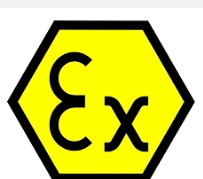Information
-
Audit number
-
Silberline Finished Good Paste (ZR) Racking
-
Conducted on
-
Inspection conducted by
Disclaimer
Disclaimer
-
The assessors believe the information contained within this risk assessment report to be correct at the time of printing. The assessors do not accept responsibility for any consequences arising from the use of the information herein. The report is based on matters which were observed or came to the attention of the assessors during the day of the assessment and should not be relied upon as an exhaustive record of all possible risks or hazards that may exist or potential improvements that can be made.
Confidentiality Statement
-
In order to maintain the integrity and credibility of the risk assessment processes and to protect the parties involved, it is understood that the assessors will not divulge to unauthorised persons any information obtained during this risk assessment unless legally obligated to do so.
RACK SAFETY OFFICER / REPORTING PROCEDURE
-
Any damage or unsafe occurrence must be reported,to the Health, safety & Environmental officer, thus ensuring that any necessary actions can be taken to maintain a safe working environment.
The racking inspection team will undertake routine inspections, and report their findings to the Health, safety and Environmental officer who will maintain the safety reports.
COLOUR CODING FOR RISK IDENTIFICATION
-
The following colour coding; Green, Orange, and Red are classifications of risk as defined by FEM ‘Guidelines for the Safe Use of Static Racking’
Green Risk: Damage requiring surveillance.
Orange Risk: Hazardous damage requiring action as soon as possible.
Red Risk: Very serious damage requiring immediate action.
COLOUR CODE DEFINITIONS
-
GREEN RISK:
Damage requiring surveillance.
For damage to frames in which the limits are not exceeded. This would indicate racks where some damage was present but was considered non-critical.
Such damaged components should be recorded as suitable for further service until the next management inspection, but clearly identified for further re-examination at future inspections.
ORANGE RISK:
Hazardous damage requiring action as soon as possible.
For damage to frames in which the limits are exceeded by up to a factor of two. This would identify an area where the damage was sufficiently severe to warrant remedial work but not so severe as to warrant the immediate off-loading of the rack. Once the rack is unloaded however, it should not be re-loaded until repairs have been carried out. In the event that the storage position remains full for several days after the initial identification of the problem, the rack should be off-loaded for repair without further delay.
The USER company must have a method of isolating such racks to ensure that they do not come back into use until the necessary repairs have been carried out and the equipment certified as safe. For example, use could be made of dated adhesive labels, which indicate racks that are not to be re-loaded until rectified. In practice any racking with ORANGE RISK category damage should be re-designated RED RISK damage if remedial work has not been carried out within four weeks of the original designation.
RED RISK:
Very serious damage requiring immediate action.
For damage to frames in which the limits exceed a factor greater than two.
These are situations where a critical level of damage is identified which warrants an area of racking being immediately off-loaded and isolated from future use until repair work is carried out. Such repair work would involve replacement of the damaged item.
USER companies must have a method of isolating areas to ensure that they do not come back into use prior to the repair work being carried out. For example, a particular bay could be off-loaded in the presence of the inspector and roped off to prevent further use.
INSPECTION INTERVALS
-
Monthly Inspections
This should be carried out in a similar manner to the weekly inspection, but include the physical emptying of random bays in order to carry out a more detailed inspection.
_ It should also be used to check that items already identified as Red Risk have been isolated with the necessary actions taken to rectify the risk. Similarly Orange Risk items should be checked to ensure repairs are underway.
_ Ensure that all safe working load signs, maintenance and other safety signs are in place.
Twelve Monthly Inspections
Must be completed at least once every Twelve months. A major inspection by a technically competent person fully experienced in the identification and categorisation of rack damage. Such a person may be an external specialist capable of giving an independent assessment of the racking. This review should also examine the performance of the reporting procedures and that actual repairs are being carried out.
The inspection should be comprehensive and include checking for out-of-plumb and ensure that the rack installation has not been altered. A copy of the load application and configuration drawings shall be retained for this purpose.
Site 1
Finished Good Paste (ZR) Racking
-
Rack inspection check list
Serial
-
Location
- ZR 01
- ZR 02
- ZR 03
- ZR 04
- ZR 05
- ZR 06
- ZR 07
- ZR 08
- ZR 09
- ZR 10
- ZR 11
- ZR 12
- ZR 13
- ZR 14
- ZR 15
- ZR 16
- ZR 17
- ZR 18
- ZR 19
- ZR 20
- ZR 21
- ZR 22
- ZR 23
- ZR 24
- ZR 25
- ZR 26
- ZR 27
- ZR 28
- ZR 29
- ZR 30
- ZR 31
- ZR 32
- ZR 33
- ZR 34
- ZR 35
- ZR 36
- ZR 37
- ZR 38
- ZR 39
- ZR 40
- ZR 41
- ZR 42
- ZR 43
- ZR 44
- ZR 45
- ZR 46
- ZR 47
- ZR 48
- ZR 49
- ZR 50
- ZR 51
- ZR 52
- ZR 53
- ZR 54
- ZR 55
- ZR 56
- ZR 57
- ZR 58
- ZR 59
- ZR 60
- ZR 61
- ZR 62
- ZR 63
- ZR 64
- ZR 65
- ZR 66
- ZR 67
- ZR 68
- ZR 69
- ZR 70
- ZR 71
- ZR 72
- ZR 73
- ZR 74
- ZR 75
- ZR 76
- Other
-
Bay
- Bay A
- Bay B
- Bay C
- Bay D
- Bay E
- All bays
-
Observation
- Damaged
- Dislodged
- Missing
- Other
- Corrosion evident
- Incorrectly installed
- Non compliant - Manufactured prior to 1993 and can not be certified to current standards
- Incorrect component installed
-
Comments
-
Item
- Beam
- Upright
- SWL sign
- Diagonal brace
- Horizontal brace
- Nut
- Bolt
- Baseplate
- Baseplate anchor bolt
- Frame
- Mesh deck
- Rack end protector
- Upright protection
- Beam safety clip
- Shelf
- Shelf Clip
- Kick Plate
- Back Sheet
- Column
- Storage Arm
- Base
- Back Bracing
- Pallet Rail
- Beam Locking Screw
- Other
- Column guard
-
Specifications
- Other
- 2438 90R Blue
- 2438 90R Pgal
- 3048 90R Blue
- 3048 90R Pgal
- 3658 90R Blue
- 3658 90R Pgal
- 4267 90R Blue
- 4267 90R Pgal
- 4877 90R Blue
- 4877 90M Blue
- 4877 90H Blue
- 4877 90R Pgal
- 4877 90M Pgal
- 4877 90H Pgal
- 6096 90R Blue
- 6096 90M Blue
- 6096 90H Blue
- 6096 90R Pgal
- 6096 90M Pgal
- 6096 90H Pgal
- S8 2400 90G Pgal
- S8 2400 90R Blue
- S8 2400 90R Pgal
- S8 3000 90G Pgal
- S8 3000 90R Pgal
- S8 3000 90R Blue
- S8 3600 90G Pgal
- S8 3600 90R Pgal
- S8 3600 90R Blue
- S8 4200 90G Pgal
- S8 4200 90R Pgal
- S8 4200 90R Blue
- S8 4800 90G Pgal
- S8 4800 90R Pgal
- S8 4800 90R Blue
- S8 6000 90R Pgal
- S8 6000 90M Pgal
- S8 6000 90H Pgal
- S8 6000 90R Blue
- S8 6000 90M Blue
- S8 6000 90H Blue
-
Specifications
-
Component notes
-
Component notes
-
Specifications
-
Specifications
-
Location
- Lower
- Upper
- Front
- Rear
- Left hand
- Right hand
- Level 1
- Level 2
- Level 3
- Level 4
- Level 5
- Level 6
- Level 7
- Level 8
- Level 9
- Level 10
- Level 11
- Level 12
- Level 13
- Level 14
- Level 15
- Other
- Multiple locations
- End of rack
-
Comments
-
Rating
-
Material/Manufacturer
-
Comments
-
Recommended Actions
- Replace with new component
- Install IAW manufacturers specification
- Remove and reinstall IAW manufactures specifications
- Remove and discard
- Dismantle and dispose
- Monitor only
- Other
- Invert and reinstall
- Install correct component
- Replace with new compliant system
-
Comments
-
Photograph
Additional Comments/Reccomendations
-
Inspection completed by
-
Add signature








